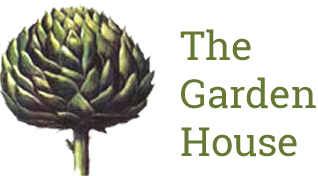The holly and the ivy
Posted:21 December 2011
Both holly and ivy make striking winter evergreens with all the traditional Christmas links.
Hollies carry colourful winter berries to add to their important all-year-round foliage, especially attractive when you consider that from October to March most other plants have shut down for the winter. They are very tough and grow well in inhospitable conditions such as windy and salty areas. Many have very attractive foliage, and of course, holly berries are a favourite with birds and other wildlife and last really well when cut for decoration.
Here are three hollies that are recommended by the RHS. Don’t forget it is the females that produce the berries, though in most cases you need a male nearby to produce berries (this means that the plant is dioecious – male and female flowers on separate plants). There are some hollies that do not need a male and female – J.C. van Tol being an example of this – so be sure to check them out with the nursery before buying. Just to make things even more complicated some hollies have a male name but are female or visa versa! See below Ilex x altaclerensis ‘Golden King’.
 Ilex x altaclerensis Golden King: despite its name, ‘Golden King’ is a female holly with a crowded crop of slightly brownish red berries set amongst colourful leaves. Purple stems carry almost spine-free foliage with wide bright yellow margins making Golden King one of the most colourful of all garden shrubs. Vigorous, but easily clipped to a hedge if required. 1.8m (6ft)
Ilex x altaclerensis Golden King: despite its name, ‘Golden King’ is a female holly with a crowded crop of slightly brownish red berries set amongst colourful leaves. Purple stems carry almost spine-free foliage with wide bright yellow margins making Golden King one of the most colourful of all garden shrubs. Vigorous, but easily clipped to a hedge if required. 1.8m (6ft)
Ilex aquifolium Handsworth New Silver: rich purple young growth carries long, rather narrow, brightly variegated leaves with a little central mottling and a broad margin of pale cream or white. One of the more prolific hollies, with its crop of bright red berries which make a striking contrast with the foliage, Handsworth New Silver eventually makes a bold and impressive specimen. 1.6m (5ft)
Ilex x altaclerensis Lawsoniana: one of the brightest of all hollies, the large and almost spine-free foliage is vividly splashed with bright yellow and pale green across the centre of each leaf. The berries are brownish red and carried in generous clusters along the branches. Rather upright in growth, branches with all-green foliage may sometimes appear but these are easily cut out. 1.8m (6ft)
The botanical name for the ivy family is Hedera. Ivies are hardy, evergreen, clinging, climbing plants, ideal for growing up walls, over tree stumps or for ground cover. They can be grown in pots, hanging baskets, window boxes and used as houseplants. Hederas are a very useful group of plants for the garden. The wide range of varieties now available give colour and form all the year round. See Fibrex nursery for a fantastic collection www.fibrex.co.uk Here are some recommended by the RHS:
 Hedera helix Parsley Crested: a distinctive, brightly coloured, all-green ivy with pale, fairly prominent veins the main feature of Parsley Crested is these tightly waved leaf margins. The surface of the leaf may also be puckered or waved and the result is an attractive and intriguing plant that produces long trails so is ideal for cutting for the holidays or in baskets. 2m (61/2ft)
Hedera helix Parsley Crested: a distinctive, brightly coloured, all-green ivy with pale, fairly prominent veins the main feature of Parsley Crested is these tightly waved leaf margins. The surface of the leaf may also be puckered or waved and the result is an attractive and intriguing plant that produces long trails so is ideal for cutting for the holidays or in baskets. 2m (61/2ft)
Hedera colchica Sulphur Heart: also known, incorrectly, as ‘Paddy’s Pride’, this is softer in its colouring than Dentata Variegata and with smaller, 10-12.5cm (4-5in), foliage. Each leaf rolls back a little at the sides highlighting the irregular bright yellow central splash, which fades with age, surrounded by a pale green outer zone. Good on walls or fences, or as ground cover. 3m (10ft)
Hedera helix Glacier: one of the most popular of all ivies, ‘Glacier’ is widely used both indoors as a house plant and outside. It is a superb ground cover ivy, even in dry and shady situations, and is also good on dark walls. Its silvery-grey mottling and slender cream edging to the three-lobed leaves bring new brightness to shady areas. 3m (10ft)

